On 10 May 1860, German chemists, Robert Bunsen and Gustav Robert Kirchoff announced their the discovery of the new elements caesium and rubidium.
The following year, Bunsen published some further results of his work on compounds of these new elements. His paper (the original of which was in German) was summarized in the American Journal of Science (Nov 1861) labelled Caesium and Rubidium.
Bunsen gave an account of how he managed to identify these as new elements by spectrum analysis. Though originally found in tiny amounts in the mineral waters of Dürkheim, he also found these new elements in lepidolite minerals. Thus he more easily obtained small quantities of compounds sufficient for laboratory testing.
The article also explains how the names for Caesium and Rubidium were chosen.
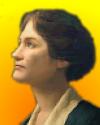
On 10 May 1900, Cecilia Payne-Gaposchkin was born, an English-born American astronomer who was the first to apply laws of atomic physics to the study of the temperature and density of stellar bodies, and the first to conclude that hydrogen and helium are the two most common elements in the universe. She had difficulty persuading her superiors to take her work seriously. Today's book pick is: , by , by this great woman astronomer.
The book was editted by her daughter, Katherine Haramundanis, who is most able to properly interpret and augment with her personal recollections. This book will interest both astronomers and those studying the advancement of the position and status of women in society.
It is available from Amazon, typically about (As of earlier time of writing - subject to change.)
| no image | [The] weakness of biological balance studies has aptly been illustrated by comparison with the working of a slot machine. A penny brings forth one package of chewing gum; two pennies bring forth two. Interpreted according to the reasoning of balance physiology, the first observation is an indication of the conversion of copper into gum; the second constitutes proof. [Co-author with David Rittenberg (1906-70).] |
 | No idea should be suppressed. … And it applies to ideas that look like nonsense. We must not forget that some of the best ideas seemed like nonsense at first. The truth will prevail in the end. Nonsense will fall of its own weight, by a sort of intellectual law of gravitation. If we bat it about, we shall only keep an error in the air a little longer. And a new truth will go into orbit. |
 | It is characteristic of science that the full explanations are often seized in their essence by the percipient scientist long in advance of any possible proof. |
| Before you look at today's web page, see if you can answer some of these questions about the events that happened on this day. Some of the names are very familiar. Others will likely stump you. Tickle your curiosity with these questions, then check your answers on today's web page. | |
| Births | |
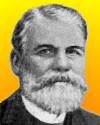 | François-Marie Raoult, born 10 May 1830, was a French chemist who formulated a law on solutions (called Raoult’s law) which made it possible to determine an important property of the molecules of dissolved substances. What is this property? |
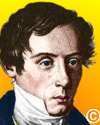 | A French physicist, born on 10 May 1788, pioneered in optics and did much to establish the wave theory of light. His name is also well-known for the complex, ridged lenses used to project the light from lighthouses, which are named after him. What is the name of this scientist? |
| Deaths | |
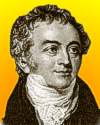 | An interesting English physicist (1773-1829) died on this day. He reinforced the wave theory of light with his study of interference of of light. He also is known for his work with elasticity, A property of materials now uses his name with the word modulus. What is the name of this scientist? |
 | Leonhard Fuchs was a German botanist (1501-1566) who wrote books describing numerous plant species. Because of the significance of his work, later a shrub named after him. This shrub’s flowers have a particular color known by the same name, which has become part of our language, thus eternally memorializing this scientist. Can you name this shrub or flower? |
| Events | |
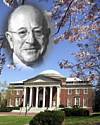 | On 10 May of a certain year, the first planetarium owned by a U.S. university, opened to the public. John Motley Morehead made the gift to the University of Chapel Hill, North Carolina. In which decade was the Morehead Planetarium opened? |
 | On 10 May 1860, the discovery of caesium, a new element, was announced by Robert Bunsen and Gustav Robert Kirchoff at the Berlin Academy of Scientists. They isolated it to identify what element was producing certain lines in a spectrum analysis. The element was named for the color of these lines. What was the color of caesium’s most characteristic spectral lines? |
 | In 1852, the theory of valence was announced by an English chemist. The valence explains that any atom can combine with a certain, limited number of other atoms. This is a fundamental consideration for chemical structure. It is known simply as the “theory of valence”, rather than “so-and-so’s theory”, hence his name is not heard much, even though his work earned him a knighthood. What is the name of the scientist that originated the theory of valence? |
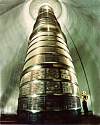 | On 17 May 1979, the highest voltage ever generated, was produced by the National Electrostatics Corporation, Oak Ridge, Tenn. To the nearest power of ten, what was this voltage? |
Fast answers for the previous newsletter for May 9: the Earl of Carnarvon • the speed of light • When gases combine their relative volumes bear a simple numerical relation to each other (e.g., 1:1, 2:1) and to their gaseous product (under constant pressure and temperature). • eyes • The Hindenburg Zeppelin • stethoscope.
 If you enjoy this newsletter, the website, or wish to offer encouragement or ideas, please send feedback by using your mail reader Reply button.
If you enjoy this newsletter, the website, or wish to offer encouragement or ideas, please send feedback by using your mail reader Reply button. Your click on a Facebook, StumbleUpon, or other social button on the site webpages is also a welcome sign of appreciation. Thank you for using them.
© This newsletter is copyright 2020 by todayinsci.com. Please respect the Webmaster's wishes and do not put copies online of the Newsletter — or any Today in Science History webpage. (If you already have done so, please remove them. Thank you.) Offline use in education is encouraged such as a printout on a bulletin board, or projected for classroom viewing. Online, descriptive links to our pages are welcomed, as these will provide a reader with the most recent revisions, additions and/or corrections of a webpage. For any other copyright questions, please contact the Webmaster by using your mail reader Reply button.
--
If you do not want to receive any more newsletters, Unsubscribe
To update your preferences and to unsubscribe visit this link
Executive Real Estate Business Class
-
"It was like a man with wings. It wasn't like anything you'd see on TV or in a monster movie." ...
About the publisher
Search This Blog
Blog Archive
-
▼
2020
(1542)
-
▼
May
(194)
- FAMILY: Building kindness in a tough time
- What is history's biggest mystery?
- On This Day for May 31 - Adolf Eichmann hanged, Cl...
- Globalist Race War? because COVID Coup exposed? ...
- Newsletter for Sunday 31 May.
- May 31: Battle of Jutland, Earthquakes and the Clo...
- BREAKING NEWS: SpaceX launches new era of spacefli...
- The Compass: Spain
- On This Day for May 30 - Joan of Arc burned at the...
- Newsletter for Saturday 30 May.
- CORONAVIRUS SPECIAL EDITION: The best way to clean...
- May 30: Voltaire the Rebel
- This Week's Roundup Top Ten from History News Network
- On This Day for May 29 - Mount Everest summit reac...
- Newsletter for Friday 29 May.
- You & your loved ones can be Involuntarily Quarant...
- YOUR WEEKLY ESCAPE: The famous Viking warrior who ...
- May 29: Return of Charles II, Mt. Everest Knocked ...
- Alone Returns With a $1,000,000 Prize
- On This Day for May 28 - Amnesty International fou...
- The secular utilitarian U.N. New World Order has a...
- Newsletter for Thursday 28 May.
- May 28: Spanish Armada Sets Sail, The Indian Remov...
- SCIENCE: Restoring an American frontier
- Breaking News from History News Network
- On This Day for May 27 - Founding of St. Petersbur...
- Christian History Magazine: Covid-19 Response
- Newsletter for Wednesday 27 May.
- Learn whose pulling the strings what the media ha...
- May 27: Habeaus Corpus, Priam's Treasure and Dunkirk
- TRAVEL: Find the secrets to your backyard
- Journey with Ancient Explorers when you subscribe ...
- On This Day for May 26 - Martin Luther declared a ...
- Newsletter for Tuesday 26 May.
- May 26: Start of the Dow Jones Index, Middle Easte...
- HISTORY: The tumultuous past of the U.S. Postal Se...
- A Memorial Day Offer from Britannica!
- Grant Premieres Tonight!
- New This Week On History News Network
- On This Day for May 25 - U.S. Constitutional Conve...
- Economic Re-Opening is a Fakeout + CDC numbers rev...
- Newsletter for Monday 25 May.
- May 25: On This Day in History
- FAMILY: Moving past a big disappointment
- The real history behind WW2 film 'Greyhound' | Ann...
- On This Day for May 24 - Opening of the Brooklyn B...
- Newsletter for Sunday 24 May.
- Vaccine: 20 percent Serious Injury after skipping ...
- May 24: Methodism, Morse Code and the Bridge that ...
- The Compass: Argentina
- Your New Favorite Podcast
- On This Day for May 23 - Tibet annexed by China, C...
- Watch all the talks from BBC History Magazine's Me...
- Newsletter for Saturday 23 May.
- Dolores Cahill PhD expert in molecular genetics an...
- CORONAVIRUS SPECIAL EDITION: There's a reason so m...
- May 23: The Crazy Trigger for the Thirty Years War
- PHOTOGRAPHY: Capturing 59 years of human spaceflight
- How Booze, Drugs, And A Woman Named June Destroyed...
- A Memorial Day Sale for Everyone!
- The Roundup Top Ten from History News Network
- On This Day for May 22 - Roman Emperor Constantine...
- Newsletter for Friday 22 May.
- YOUR WEEKLY ESCAPE: What do the world's happiest p...
- May 22: The World's 1st Atlas is Published and WWI...
- ANIMALS: Saving the pangolin
- On This Day for May 21 - First nonstop solo transa...
- May 21: The 1st Transatlantic Flights and some Mem...
- Ron Panzer interview will air on Friday on Trunew...
- Grant: Watch the Extended Opening Scene
- SCIENCE: Food supply challenges prompt creativity
- Breaking News from History News Network
- On This Day for May 20 - U.S. Homestead Act signed...
- Newsletter for Wednesday 20 May.
- Ron Panzer interview: Trunews.com Today at 3 pm E...
- May 20: Vasco da Gama, Shakespeare and My Fair Lady
- TRAVEL: The promise of happiness, even now
- Inspire Their Curiosity w/ Nat Geo Kids Magazine
- On This Day for May 19 - Ringling Bros. Circus for...
- When we learn what the vaccine will do to everyone...
- Newsletter for Tuesday 19 May.
- May 19: On This Day in History
- See The Most Accurate Map In The World
- HISTORY: At 110 years old, he made our cover
- New This Week on History News Network
- On This Day for May 18 - Eruption of Mount St. Hel...
- Newsletter for Monday 18 May.
- May 18: On This Day in History
- FAMILY: Helping your kids after their troubling dr...
- What did Queen Victoria really look like? | Mediev...
- On This Day for May 17 - School segregation outlaw...
- Newsletter for Sunday 17 May.
- Cardiologist states Hydroxychloroquine side-effect...
- May 17: NYSE Forms and the Watergate Hearings Begin
- The Compass: California
- On This Day for May 16 - Warsaw Ghetto Uprising su...
- Newsletter for Saturday 16 May.
- May 16: Dambusters and Stem Cells
- CORONAVIRUS SPECIAL EDITION: This map shows where ...
- The dream to photograph 10,000 vulnerable animal s...
-
▼
May
(194)
-
Blogroll
-
About
HistoryFact










0 comments:
Post a Comment